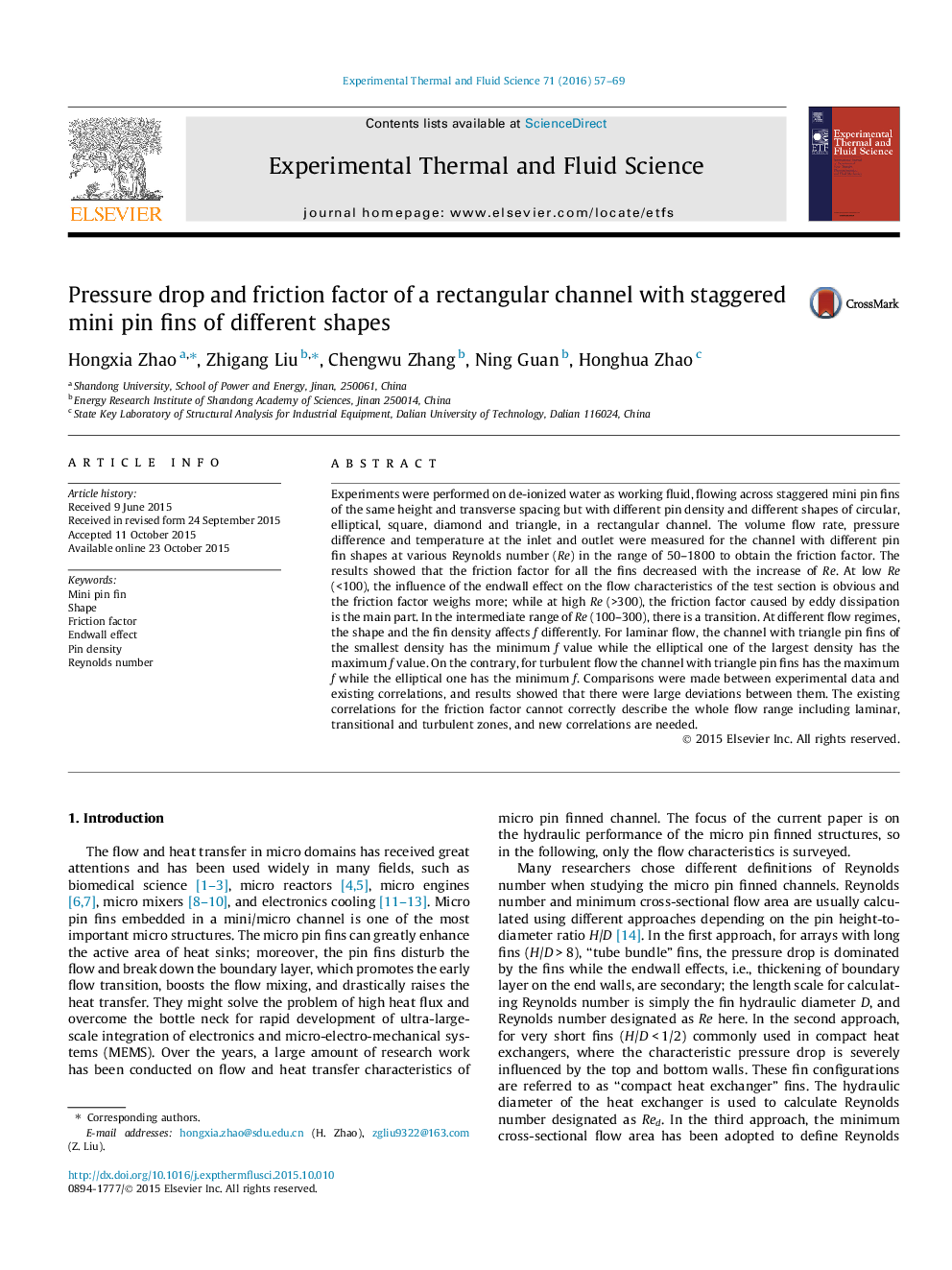| کد مقاله | کد نشریه | سال انتشار | مقاله انگلیسی | نسخه تمام متن |
|---|---|---|---|---|
| 651115 | 1457405 | 2016 | 13 صفحه PDF | دانلود رایگان |
• Flow resistance of channel with pin fins of different shape and density is studied.
• Influence of endwall effect and vortex shedding at low and high Re is clarified.
• Influence on flow resistance by pin fin shape is more significant at large Re.
• At different flow regimes, pin density affects friction factor differently.
• Large deviations exist between experimental data and existing correlations.
Experiments were performed on de-ionized water as working fluid, flowing across staggered mini pin fins of the same height and transverse spacing but with different pin density and different shapes of circular, elliptical, square, diamond and triangle, in a rectangular channel. The volume flow rate, pressure difference and temperature at the inlet and outlet were measured for the channel with different pin fin shapes at various Reynolds number (Re) in the range of 50–1800 to obtain the friction factor. The results showed that the friction factor for all the fins decreased with the increase of Re. At low Re (<100), the influence of the endwall effect on the flow characteristics of the test section is obvious and the friction factor weighs more; while at high Re (>300), the friction factor caused by eddy dissipation is the main part. In the intermediate range of Re (100–300), there is a transition. At different flow regimes, the shape and the fin density affects f differently. For laminar flow, the channel with triangle pin fins of the smallest density has the minimum f value while the elliptical one of the largest density has the maximum f value. On the contrary, for turbulent flow the channel with triangle pin fins has the maximum f while the elliptical one has the minimum f. Comparisons were made between experimental data and existing correlations, and results showed that there were large deviations between them. The existing correlations for the friction factor cannot correctly describe the whole flow range including laminar, transitional and turbulent zones, and new correlations are needed.
Journal: Experimental Thermal and Fluid Science - Volume 71, February 2016, Pages 57–69
